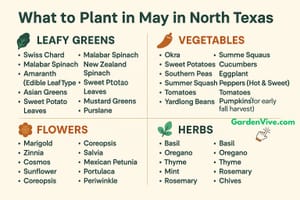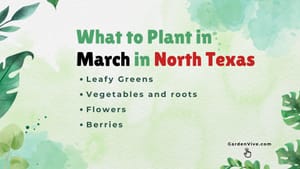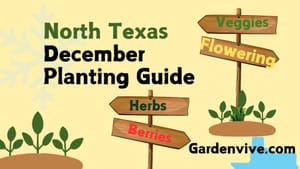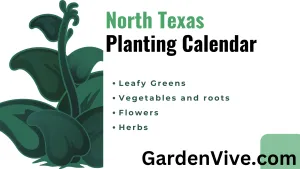
The January planting guide is going to be a bit different for North Texas. Why so? Well, some of the plants in my chart will perform better if we start the seeds indoors and some plants should be planted outdoors. To make this planting guide actually useful, I will mention the planting method and where to plant. In this article, I will share complete charts on what to plant in January in North Texas.
What did I mean by complete chart?
You will get the list of plants (veggies, flowering plants, herbs, berries) that you can plant in January. You will get to know if you should start the seeds indoors or not.
If you are not a regular reader of GardenVive, check this: North Texas Planting Calendar - for the whole year.
For the last six months, I have been creating planting charts for North Texas with my Grandpa (85). If you want the best planting time for any specific plant please check the full-year planting calendar.
This planting guide will help you to find what you can plant at this time of the year. All the plants you will find in these charts can perform well if planted in January but that does not mean January is the best planting time for those.
Request to my readers: It takes a large amount of time to create charts like this. At the end of the article, I have added the printable planting chart only for our members. You can subscribe and download. Even a free membership makes me smile.
Let's start with veggies!
Vegetables and Roots
| Plant Name | Plant Indoors/Outdoors/Both | Planting Method | Variety Suggestion | Harvesting Time (Days) |
|---|---|---|---|---|
| Spinach | Outdoors | Direct Seed Sow | Bloomsdale Long Standing | 40–50 |
| Carrots | Outdoors | Direct Seed Sow | Danvers 126 | 65–80 |
| Onions | Both | Transplantation | Texas Early Grano | 90–120 |
| Broccoli | Indoors | Transplantation | Waltham 29 | 60–90 |
| Beets | Outdoors | Direct Seed Sow | Detroit Dark Red | 50–70 |
| Kale | Outdoors | Direct Seed Sow | Lacinato | 55–75 |
| Radishes | Outdoors | Direct Seed Sow | Cherry Belle | 25–35 |
| Turnips | Outdoors | Direct Seed Sow | Purple Top White Globe | 30–60 |
| Lettuce | Both | Transplantation | Buttercrunch | 45–60 |
| Cabbage | Indoors | Transplantation | Golden Acre | 70–90 |
| Swiss Chard | Outdoors | Direct Seed Sow | Bright Lights | 50–60 |
| Cauliflower | Indoors | Transplantation | Snowball Y | 60–100 |
| Collard Greens | Outdoors | Direct Seed Sow | Georgia Southern | 55–75 |
| Garlic | Outdoors | Plant Cloves | Softneck (California Early) | 150–210 |
| Shallots | Outdoors | Plant Sets | French Red | 90–120 |
| Parsley | Both | Transplantation | Italian Flat Leaf | 70–90 |
You don't have to worry much about carrots, beets, radishes, and turnips. These can grow well in the cold-soil of January.
But nature can be unpredictable sometimes. Check the weather forecast often. If you notice any upcoming extreme cold, you should cover your plants.
Not sure on what temp. you should cover your plants? Don't worry! I have already created something for you: when to cover plants in winter. ( This is also a chart and you will find all the plants we usually grow here )
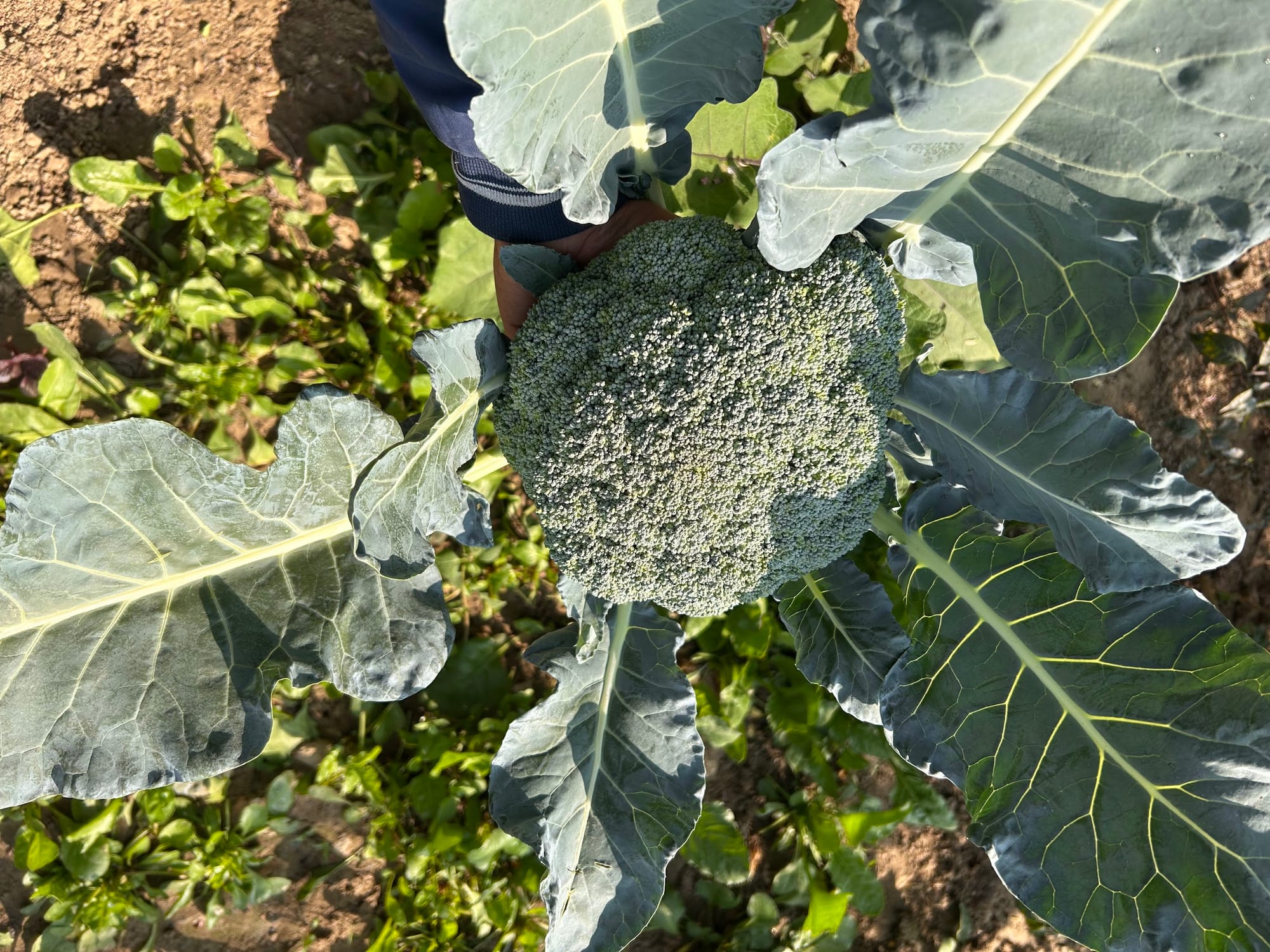
Now, move to the flowering plants.
Flowering Plants
I am a vegetable gardener but that does not mean I ignore flowering plants.
Though companion planting is a very controversial topic, there is no harm in trying this. Planting flowers along with vegetables, will increase the beauty of your garden. You can check my article on best companion plants for a vegetable garden.
Let's check the flowering plants you can plant in January in North Texas.
| Plant Name | Plant Indoors/Outdoors/Both | Planting Method | Expected Blooming Time | Fragrance |
|---|---|---|---|---|
| Pansies | Outdoors | Transplantation | 4–6 weeks after planting | Mild, Sweet |
| Snapdragons | Both | Transplantation | 6–8 weeks after planting | Light, Sweet |
| Sweet Alyssum | Outdoors | Direct Seed Sow | 6 weeks after planting | Strong, Honey-like |
| Calendula | Outdoors | Direct Seed Sow | 8–10 weeks after planting | Mild, Herbal |
| Violas | Outdoors | Transplantation | 4–6 weeks after planting | Delicate, Sweet |
| Delphiniums | Indoors | Transplantation | 10–12 weeks after planting | None |
| Sweet Peas | Outdoors | Direct Seed Sow | 12–14 weeks after planting | Intense, Sweet |
| Dianthus | Outdoors | Transplantation | 8–10 weeks after planting | Mild, Spicy |
| Stock | Both | Transplantation | 8–10 weeks after planting | Strong, Spicy |
| Primrose | Outdoors | Transplantation | 8 weeks after planting | None |
I did not feel it was important to suggest a variety for the flowering plants. Instead, I added the fragrance column and blooming time.
Sweet Alyssum and Calendula are underrated, but with proper care, they can easily attract your eyes.
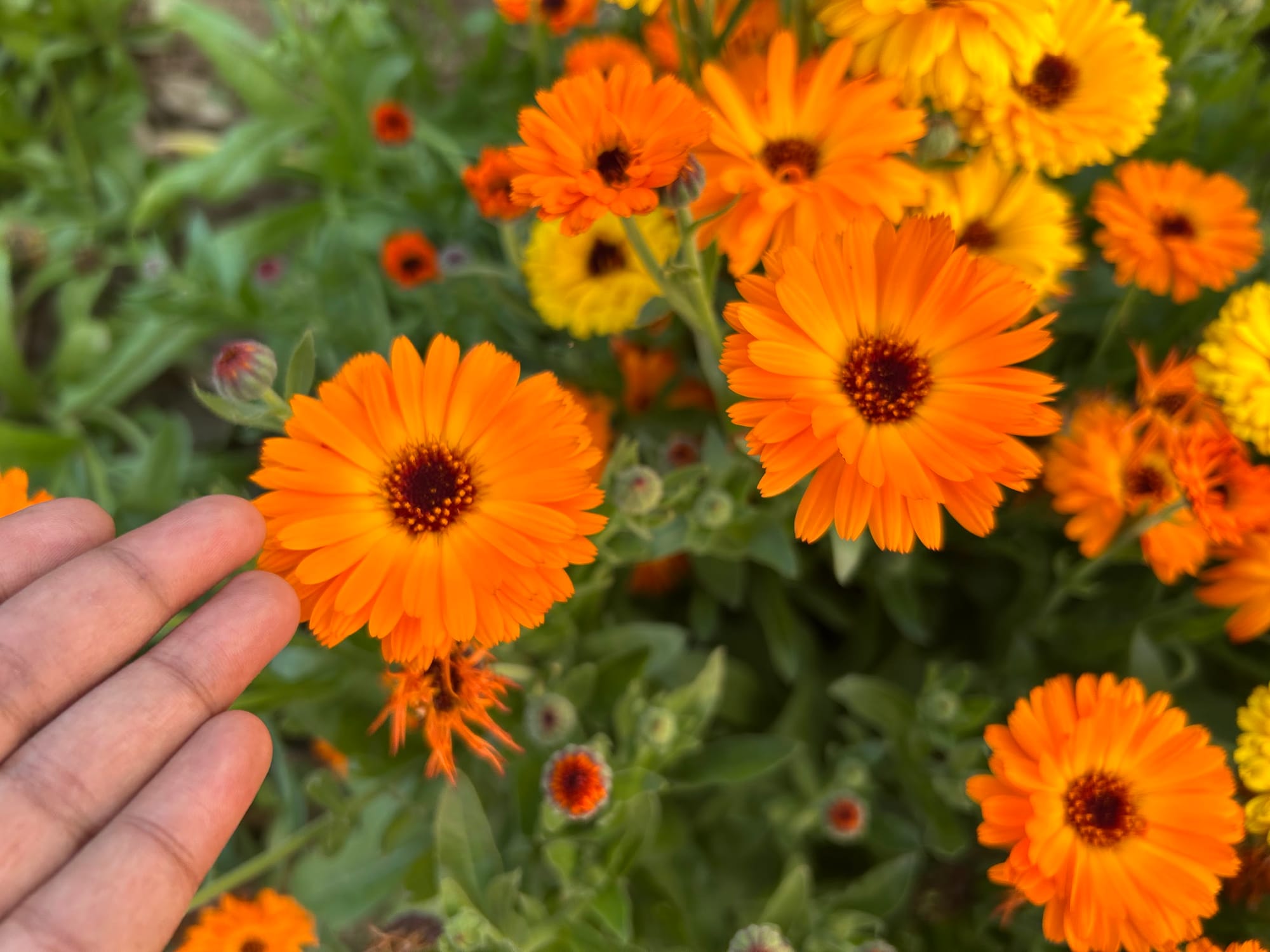
Isn't this beautiful?
Delphiniums, Dianthus, and Primrose can be grown as perennials.
Note: Not all the varieties can be grown as perennials here in North Texas.
Do you want to decorate your porch with beautiful plants? I have something for you. Take a look: Best porch plants for North Texas
Herbs - To be planted in January
| Herb Name | Plant Indoors/Outdoors/Both | Planting Method | Flavor | Perennial or Annual |
|---|---|---|---|---|
| Parsley | Both | Direct Seed Sow | Fresh, Mildly Bitter | Biennial (grown as Annual) |
| Cilantro | Both | Direct Seed Sow | Citrusy, Bold | Annual |
| Chives | Both | Transplantation | Onion-like | Perennial |
| Thyme | Both | Transplantation | Earthy, Slightly Minty | Perennial |
| Oregano | Indoors | Transplantation | Robust, Peppery | Perennial |
| Rosemary | Indoors | Transplantation | Pine-like, Aromatic | Perennial |
| Dill | Outdoors | Direct Seed Sow | Fresh, Tangy | Annual |
| Sage | Both | Transplantation | Earthy, Slightly Peppery | Perennial |
| Mint | Both | Transplantation | Cool, Sweet | Perennial |
| Tarragon | Indoors | Transplantation | Licorice-like, Sweet | Perennial |
For herbs like oregano, rosemary, and tarragon, I am suggesting to start indoors in January. They are more prone to be affected by cold snaps.
Once you find the weather stabilized, transplant those outdoors.
Tip: Use grow lights for the herbs planted indoors. ( They love lights )
Berries
| Berry Name | Plant Indoors/Outdoors/Both | Planting Method | Taste | Perennial or Annual |
|---|---|---|---|---|
| Blueberry | Outdoors | Transplantation | Sweet with a Slightly Tart Kick | Perennial |
| Strawberry | Both | Transplantation or Direct Seed Sow | Sweet and Juicy | Perennial |
| Raspberry | Outdoors | Transplantation | Tart with a Touch of Sweetness | Perennial |
| Blackberry | Outdoors | Transplantation | Sweet and Slightly Tart | Perennial |
| Goji Berry | Outdoors | Transplantation | Sweet and Sour | Perennial |
| Cranberry | Outdoors | Transplantation | Tart and Slightly Sweet | Perennial |
| Mulberry | Outdoors | Transplantation | Sweet with Slight Tartness | Perennial |
| Gooseberry | Outdoors | Transplantation | Tart with a Sweet Aftertaste | Perennial |
| Boysenberry | Outdoors | Transplantation | Sweet, Tangy, and Tart | Perennial |
| Marionberry | Outdoors | Transplantation | Sweet with a Slightly Tart Note | Perennial |
Berries love to grow in full sunlight. Choose the planting location wisely.
Avoid planting those in shady areas of your garden.
The below part can be viewed by premium members only to download the charts. (Printable)

